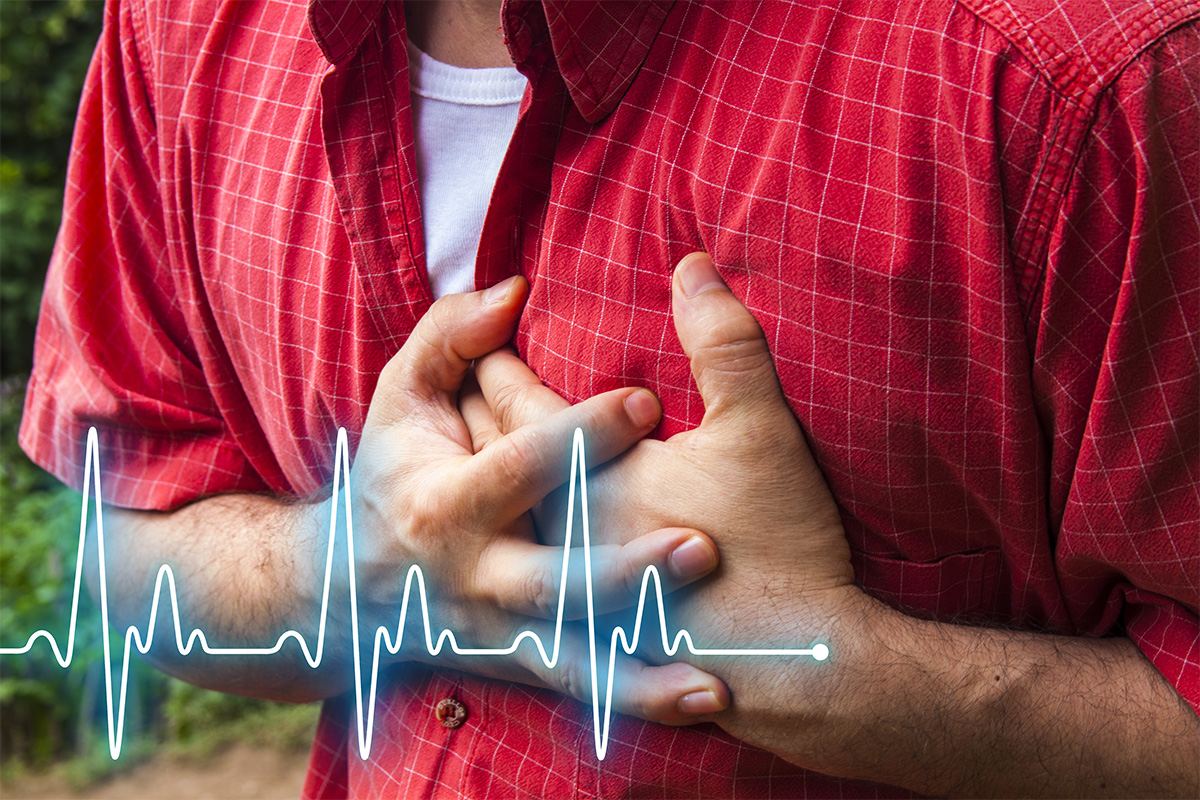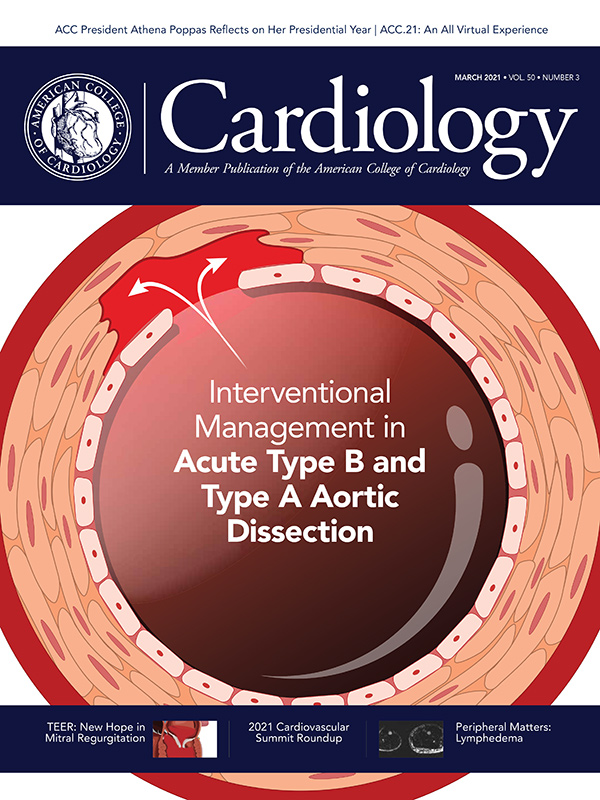Innovation at ACC | Understanding the Value of AEDs at Home

Early defibrillation is the most useful intervention in patients with a sudden out-of-hospital cardiac arrest (OHCA). It is well known that access to automatic external defibrillators (AEDs) in the public arena has transformed the likelihood of surviving sudden cardiac arrest (SCA). Unfortunately, most people don't arrest in a public location like the airport or in line at the local retail store where an AED is now available, and 70% of cardiac arrests occur at home. To date there has been no meaningful push to deploy AEDs into home settings.
Trialists may cite the HAT trial,1 which failed to document a benefit to at-home availability of AEDs in patients with anterior myocardial infarction and mildly reduced ejection fraction, as one reason. However, a closer reading of the limitations of the HAT trial (low event rate, lack of enthusiasm for AED use) clearly show that the potential benefits in the right home population have not been well explored. Also of note is that the HAT trial was performed in people with an ejection fraction of 35%-55%, with a mean of 45%. This was done to exclude patients who have an ICD. But it's known that for a variety of reasons many people with an indication for ICD do not ultimately receive one and remain at increased risk of cardiac arrest.
There is an opportunity to obtain more real-world evidence on the usefulness of AEDs in the home for high-risk populations. Like many medical technologies, AEDs have become smaller, smarter and easier to use. There is a rationale for deploying AEDs into the homes of the right patients at the right time in the right setting. There is an opportunity to run a real-time trial on this topic by deploying AEDs in the home at scale into areas where there often is no other option due to emergency medical services (EMS) constraints. The question in these cases is not, "are AEDs as good as EMS response?" The question is "are AEDs at home better than nothing or a delayed response?"
My interest in this topic emerges directly from my experience caring for patients through my practice in the state of Maine. With a population of 1.3 million people spread over 35,385 square miles, Maine is the most rural state east of the Mississippi. The shortage of first responders and EMS crews is well known. According to the local paper on Mt. Desert Island, home of Acadia National Park, the shortage of staff results in smaller crews covering substantial areas of territory to respond to calls.2 Oftentimes, if a patient needs to be transported to a higher level of care, from home or from the local hospital, the ambulance crew is not available in the region for hours at a time. The Portland Press Herald described the problem in equally challenging terms – cost structure, reimbursements and low pay for EMS workers are inhibiting the ability of EMS services to do their essential work.3
This problem is not unique to Maine. In 2017 Mell, et al.4 published the first nationally comprehensive comparison of EMS response times in urban vs. suburban vs. rural areas. The median rural response time was 13 minutes; nearly double the suburban and urban census tracts. The mean (14 minutes) and standard deviation are double those recorded for more populated areas.
Criticisms for at home AEDs have often been focused through the lens of public investment in such a strategy. Fortunately, this type of device has come to such a price point that the merits at scale are not really relevant. When the price of a lifesaving device is less than the price of a crown on a tooth, we should be revisiting the question. The discussion about at-home AEDs is revealing what we know about many cardiac interventions: they are not for everyone. A discussion about at-home AED is a discussion about precision medicine – who, where, how and why matter more than one-size-fits-most approaches. It may be useful to identify those most at risk by an agreed upon metric – ejection fraction or infarct size, for example, and focus on the benefits in that targeted population.
Treating life-threatening arrhythmias at home first is an opportunity that sits squarely at the crossroads of medicine, public health and equity. In Maine, we say that your risk of a poor outcome should never be related to your zip code. A closer look at home AEDs in truly high-risk populations – defined both by their clinical status and access to EMS care – will put into action the urgency we all feel to care well for people across our unique geographies.
Elliot: HeartHero's At-Home AED
Elliot, the miniaturized at-home AED from HeartHero was awarded the CE Mark in November 2020, bringing the company one step closer to its mission of making AEDs accessible to everyone. "While CPR has been the tool that buys us time in cardiac arrest, it's clear that electricity is the medicine that saves your life," says Gary Montague, CEO and Founder of HeartHero. Increasing awareness around the importance of AEDs and placing them into the homes of persons at higher risk of sudden cardiac arrest (SCA) are the driving passions behind HeartHero's mission.
HeartHero, with its collaboration with ACC, will work on identifying those at risk for SCA and ultimately get AEDs placed where they need to be – in the homes. Despite the increasing presence of AEDs in public spaces and buildings, there is no way to guarantee quick enough access to one in cases of SCA, especially in the COVID-19 era. With people still quarantining at home, public access defibrillators are less accessible. Cardiac arrest has risen 52% because of COVID-19 and there are early signs of long-term cardiac effects for those who have tested positive. The importance of an at-home defibrillator is now even greater.
With the CE Mark secured, Elliot is available for pre-order in Europe and is progressing rapidly towards the approval process by the U.S. Food and Drug Administration. Learn more about HeartHero here.

This article was authored by Jennifer Monti, MD, MPH, a specialist in prevention and cardiogenetic diseases at Maine Health Cardiology in Scarborough, and a member of ACC's Health Care Innovation Member Section.
References
- Bardy GH, Lee KL, Mark DB, et al. Home use of automated external defibrillators for sudden cardiac arrest. N Engl J Med 2008;358:1793-804.
- Hinckley S. Staff shortages impact ambulance service. Mount Desert Islander Published Nov. 24, 2020. Available here.
- Maine's emergency medical response system is in crisis. Portland Press Herald Published Dec. 8 2019. Available here.
- Mell HK, Mumma SN, Hiestand B, et al. Emergency medical services response times in rural, surburban, and urban areas. JAMA Surg 2017;152:983-4.
Clinical Topics: Arrhythmias and Clinical EP, Implantable Devices, SCD/Ventricular Arrhythmias, Atrial Fibrillation/Supraventricular Arrhythmias
Keywords: ACC Publications, Cardiology Magazine, Reaction Time, Out-of-Hospital Cardiac Arrest, Ambulances, Public Health, Airports, Stroke Volume, Defibrillators, Death, Sudden, Cardiac, Death, Sudden, Cardiac, Emergency Medical Services, Emergency Responders, Arrhythmias, Cardiac, Cardiopulmonary Resuscitation, Hospitals, Infarction, Myocardial Infarction, Patient Care, Reference Standards, Innovation
< Back to Listings

